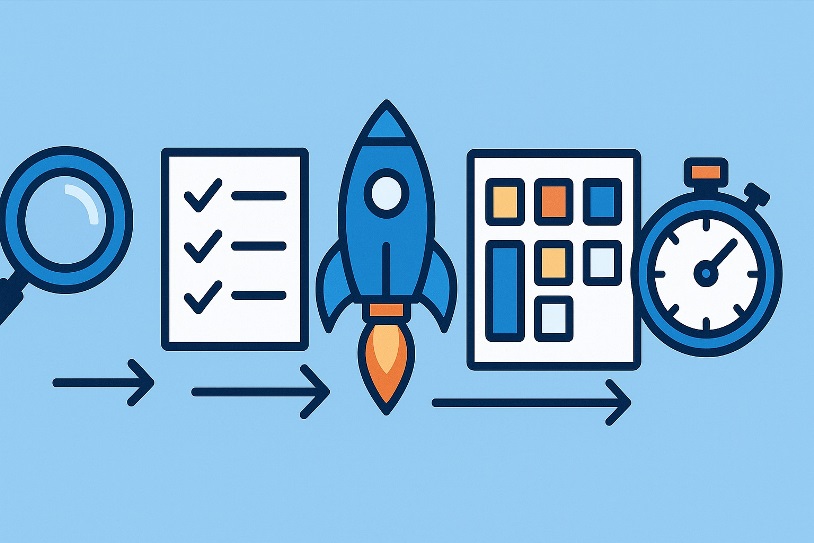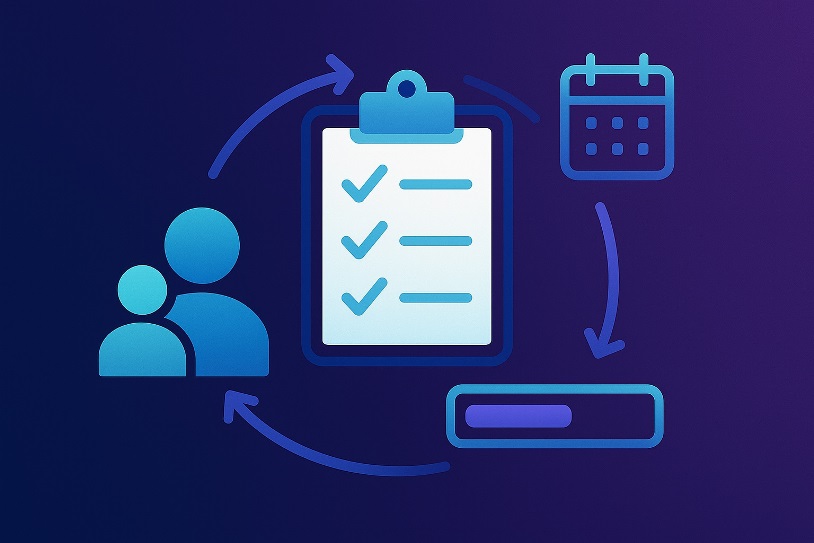
Staying sharp in today’s digital world isn’t about trying every shiny app—it’s about matching the right tool to a clear goal and using it consistently. This guide takes an authority-first, no-fluff approach so you can choose smarter, work faster, and build repeatable workflows that actually stick.
You’ll get an action-ready framework for researching, vetting, and adopting tools—plus phrasing you can use when searching, evaluating, and onboarding within a team. Consider this your practical, human-readable playbook for better work in less time.
Who this guide is for (and why it works)
Whether you’re a solo creator, startup founder, student, or part of a scaling team, the fundamentals are the same: define outcomes, map tasks, shortlist tools, test quickly, and standardize what works. This article favors clarity over hype and shows you exactly how to convert needs into tool decisions.
Here’s the first anchor: online tool guide zardgadjets—our shorthand for a rigorous yet simple process to evaluate software without guesswork.
What “fit” really means when choosing tools
A tool is a fit when it: solves a frequent task, reduces manual work, plays nicely with your stack, and can be taught to others in minutes. If a tool can’t pass those tests, it’s noise. Keep your criteria visible and use the same checklist every time so decisions are consistent across the team.
When exploring AI categories, many readers begin by comparing best AI tools—a starting point that’s helpful as long as you align choices with a specific use case, not just popularity.
If collaboration is central to your day, focus on platforms commonly recommended as best online collaboration tools, then filter by your must-haves: permissions, versioning, and external sharing.
For personal and team efficiency, don’t just collect apps touted as best productivity tools; document one measurable improvement (time saved per week, error rate reduced) before rolling anything company-wide.
Marketers and site owners will inevitably weigh options labeled best SEO tools, but the winning stack is the one that your team actually checks daily and understands deeply.
Social teams should shortlist social media management tools that support your content calendar, approval flows, and analytics you’ll act on—vanity metrics don’t move the business.
Commerce leaders often evaluate best ecommerce software; beyond feature lists, test checkout friction, page speed on mobile, and ease of merchandising—real users feel these differences.
Customer support and marketing automation conversations now include best AI chatbots; success requires clean knowledge bases, guardrails, and clear escalation to humans.
Site builders weighing best website builders should prototype a real landing page in an hour, test for responsiveness, and check that SEO basics (titles, meta, schema) are accessible without code.
Teams experimenting with generative AI tools should set a style guide and review steps, or quality will drift as outputs scale.
Growth teams comparing digital marketing tools should build a single “source of truth” dashboard so campaigns aren’t evaluated in silos.
Your research anchor and naming clarity
To unify your evaluation notes and keep search queries consistent, use the phrase latest online tool guide zardgadjets as a tag in your documentation. That way, everyone finds the same SOPs, trials, and results when they search your knowledge base.
From research to rollout: a fast, reliable workflow

Start with a clear problem statement, then gather three credible options. Score them on cost, learning curve, integration effort, data portability, and security. Run a 7–10 day pilot on real tasks. Document your findings, then standardize the winner in a short SOP.
If you run a small business, you’ll likely compare best free AI tools for small business; verify export options and fair-use limits so your workflows don’t break when you scale.
Distributed teams evaluating online productivity tools for remote teams should test asynchronous collaboration features, presence indicators, and offline reliability.
Creators entering AI content pipelines can trial AI content creation tools for beginners with a defined template and tone guide to keep outputs consistent.
Lean social teams often benefit from free social media scheduling tools; test calendar reliability, per-platform analytics, and link tracking before committing.
If you’re cost-sensitive, seek affordable SEO tools for startups that handle essentials—keyword tracking, basic site audits, and competitor snapshots—without locking you in.
Non-technical founders frequently thrive with best website builders for non-coders; prioritize templates, component libraries, and built-in performance checks.
Freelancers juggling clients should try project collaboration tools for freelancers that combine tasks, messaging, and file requests under one login to cut context switching.
Focus addicts gain momentum with time tracking tools for productivity that offer automatic capture and light-touch categorization so logging doesn’t become work itself.
Meeting-heavy roles should standardize on AI note-taking apps for meetings—but always confirm storage locations, retention policies, and export to avoid vendor lock-in.
New stores exploring ecommerce marketing tools for new stores should test onboarding flows, abandoned cart recovery, and attribution clarity from day one.
Also Read: GadgetFreeks.com | Tech News | Streaming Guides | Reviews
Skill-boost playbook (simple, repeatable, accountable)

Adopt the “pilot → SOP → scale” loop. During pilots, set a single measurable goal and revisit it after one week. If results are clear, write a one-page SOP with screenshots and keyboard shortcuts. Host a 20-minute share-out so the team can adopt the same flow tomorrow.
For clarity when sharing links and notes, reference the phrase tool guide zardgadjets as your internal label for this exact workflow. It reduces ambiguity and helps teammates search shared spaces quickly.
Mistakes to avoid (that sink tool ROI)
Don’t chase features you won’t use. Don’t skip data portability checks. Don’t forget training—create a quick-start video or micro-guide. And don’t scale a tool without a rollback plan; it’s easier to revert when pilots are cleanly isolated.
If you feel lost in discovery mode, document your search steps with the phrase how to find the latest gadjets zardgadjets so future you—and your teammates—can reproduce or refine the research trail.
Conclusion
The right stack isn’t the biggest—it’s the clearest. Anchor your choices in outcomes, test on real work, document simply, and align the whole team on the same rituals. With a consistent evaluation process and lightweight SOPs, you’ll build compound gains week after week, no matter how fast the tool landscape shifts.
FAQs
1) How long should a pilot run for a new tool?
Seven to ten working days is enough to simulate normal cycles, reveal friction, and collect measurable before/after data without dragging momentum.
2) What’s the quickest way to compare three tools fairly?
Use a one-page scorecard with identical tasks and criteria (cost, learning time, integration, portability, and security). Run each tool on the same real-world task and record results immediately.
3) How do I keep my team from reverting to old habits?
Publish a short SOP, pin it where work happens, and schedule a five-minute weekly check-in to celebrate wins and remove blockers.
4) What if two tools tie in testing?
Break the tie with data portability, support responsiveness, and how rapidly a newcomer can become productive. Favor the option that reduces long-term risk.
5) How do I prevent tool sprawl over time?
Set quarterly audits. Remove tools without owners, consolidate overlapping features, and keep a single “source of truth” dashboard for usage and outcomes.